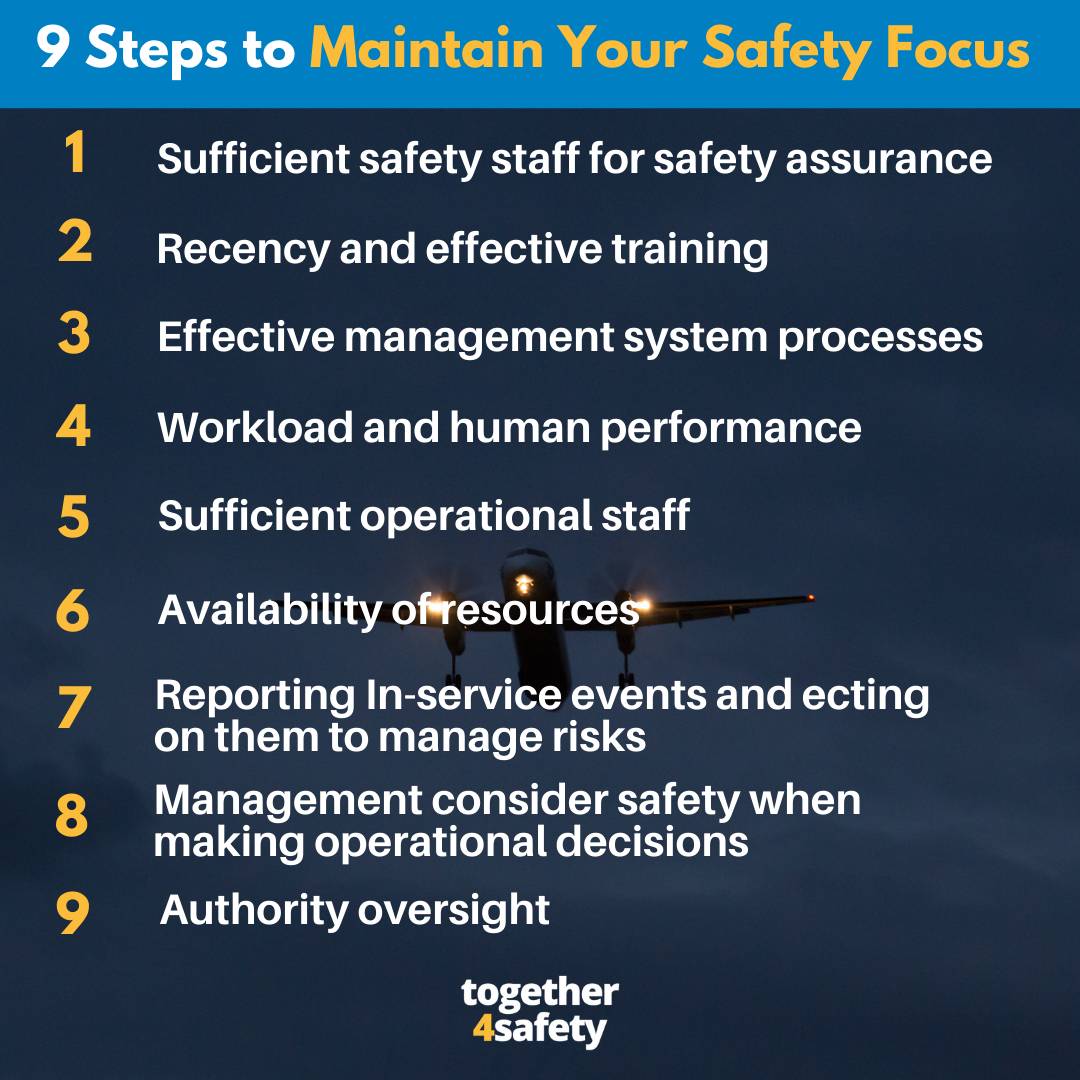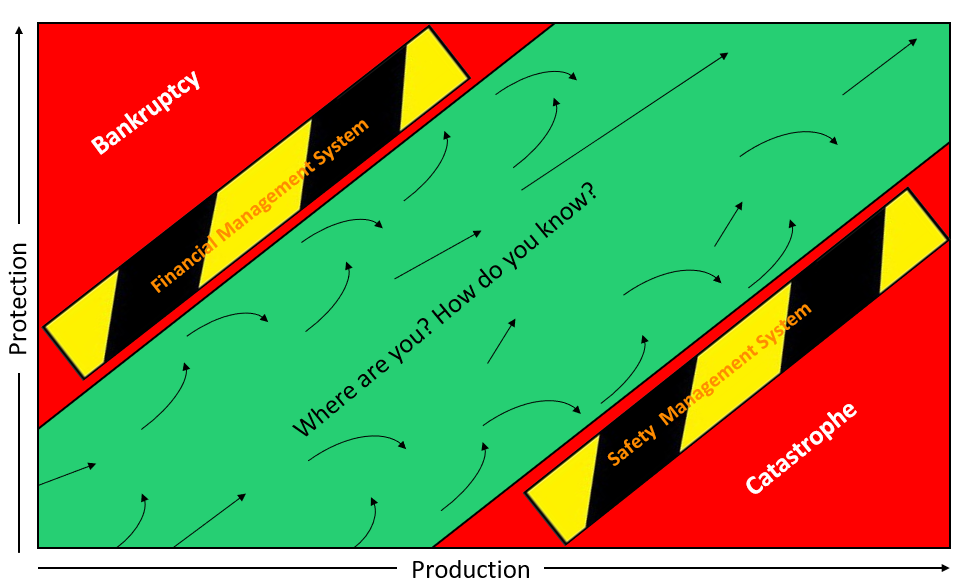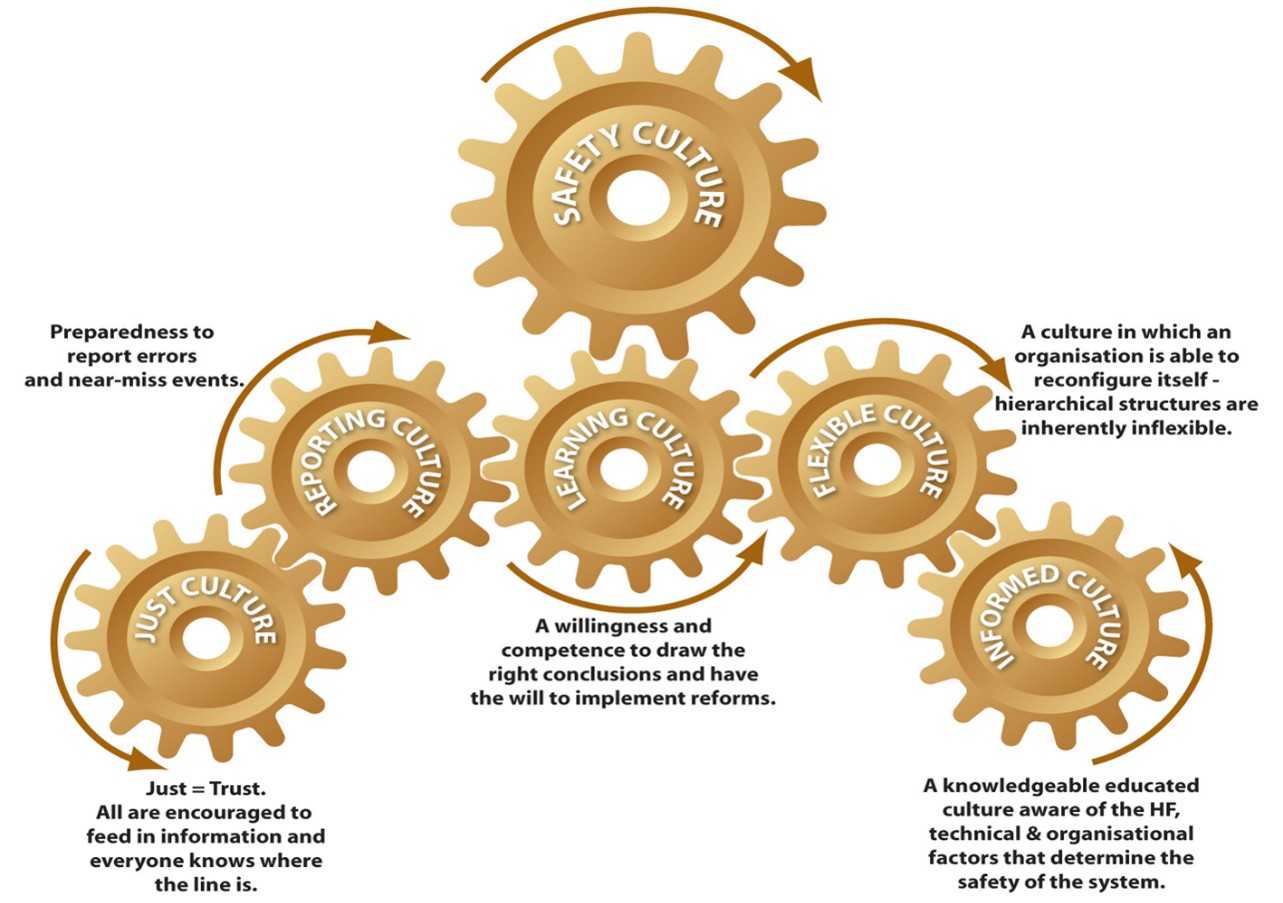These are difficult times for the aviation industry and resuming operations in such a challenging economic climate makes it hard to know where best to focus your safety efforts. This Together4Safety collaborative article provides you with lots of tips to help you identify the activities that are the best use of your time and resources.
Download the guidelines at the bottom of the article.
Introduction
As you negotiate the COVID-19 pandemic it is likely that your organization is faced with both economic and practical pressures as your operations return to service. This challenge is not necessarily new to the pandemic, but it is brought into focus by a situation that none of us has faced before.
You are not facing this challenge alone. This article aims to provide some ideas that will help you to chart a path to recovery – you can find these in the guidelines that are attached to this article. Also, we want to encourage you to use our Air Ops Community as a way to connect with a community of safety professionals facing the same challenges. Through collaboration we can help each other through this crisis.
Charting a path to recovery
The COVID-19 pandemic has affected almost every aspect of our lives in recent months. As an aviation professional you will have seen our industry and our livelihoods affected in ways none of us could have imagined even in the first quarter of 2020. As your efforts concentrate on a recovery strategy, your situation will be unique both in terms of the scale and the combination of challenges that you will face. This will be set against an unprecedented and complex financial backdrop of government support, cash management, cost management and raising capital. The effects of this harsh financial environment on operations will likely challenge you like never before. Given the commonly heard airline mantra of “safety being the top priority”, quite how to maintain that expectation will take a clear focus and great teamwork within your organisation.
As an industry, our route to recovery consists of 4 key activities that reflect the challenges we face and hopefully these will help to guide you at a practical level over the coming months. By focusing your efforts on these goals, you will help increase the chance of successfully negotiating the difficulties that you are likely to face. At a fundamental level, these goals are:
- Welcoming your passengers so they feel safe to travel;
- Caring for our people through the crisis.
- Operating safely and effectively.
- Enhancing environmental sustainability.
How Covid-19 had impacted the way we manage safety
Our industry boasts an impressive safety record. This has been hard won throughout the evolution of both technology and our management systems. One of the most significant concerns raised by regulators and industry is the negative potential of reducing our focus on safety given the clear economic and practical pressures of the COVID-19 pandemic versus the allocation of scarce resources and budget. Managing safety hazards and associated threats is all about operational context. It is important that you are able to manipulate your management system to focus organisational efforts to where they are most needed. This means analysing and managing the practical risks your organisation faces as effectively as possible. Despite the pressures created by COVID-19, it is crucial to remember that no one knows your organisation better than you, who lives and breathe it every day.
The barriers at your disposal to manage the situation
Using the Bowtie methodology, EASA considered the effectiveness of the main barriers that you will have in place to control the threats caused by a challenging financial environment. They will be very familiar to you as they are all components of your existing management system.

Clearly, the financial health of the organisation puts pressure on decision making and behaviours in all areas of an operation. However, this should not affect the safety barriers that are built into the compliance requirements. Your ensuring that there are enough people available with the required mix of skills (both safety and operational staff) is a fundamental part of operating safely. But there are many other parts to consider. Others include making sure that you maintain up-to-date IT/rostering/planning systems and have the required equipment, tools and materials.
As a cornerstone of any organisation complying with safety management regulations, risks should be reduced to an acceptable level. This should consider whether risks are being managed to as low as reasonably practical (ALARP), an approach which deliberately filters out affordability unless the cost is grossly disproportionate to the risk reduction effect.
Work as imagined and work as done, practical drift, norms and culture
Due to the difficulties generated by COVID-19, organisations face enormous pressures to deal with multiple issues simultaneously. As a result, it is understandable that your workforce may make decisions in their day-to-day operational roles that are different to those they would have made pre-pandemic. Such decisions may be conscious or subconscious, but the outcomes are much the same.
More than ever, you will need to fall back on your safety policies. These set out the values of speaking up, saying stop if anyone is feeling uncomfortable, acting with integrity, and always putting the safety interests of the travelling public first. Peter Drucker is quoted as saying that, “Culture eats strategy for breakfast”. This is especially relevant in the current environment and is often reflected in most serious incident or accident reports.
So, what’s different about operating in the context of COVID-19?
Your teams will perhaps be drawn into something called ‘group think’, where the desire for harmony or conformity in a team of people which results in an irrational decision-making outcome.
The pressures that they face might cause them to let their guard down or be tempted to cut corners, given the novel atmosphere in which they might be working;
They may be operating in new situations where their capacity or capability is adapting to something unfamiliar;
There might be an unspoken or tacit approval for a ‘can-do’ attitude that changes the rules of normal operations and situational awareness;
Given the threats to the barriers in the COVID-19 restart, a powerful message comes from revisiting the safety space model.
Business challenges and safety effectiveness

We have both financial and safety management systems to protect our businesses. They are designed to avoid our crossing the line into to either bankruptcy or a negative safety outcome. Regardless of the business pressures it is important to still understand the things that erode the safety barriers in your operation that move you from the safety of the ‘green’ area towards the ‘red’. This is something that you will already know, but due to present circumstances you will have an immediate need to understand these threats in real time and to manage them as quickly and deftly as possible.
In his review of the 2006 RAF Nimrod accident in Afghanistan, Charles Haddon-Cave’s cited a NASA safety model of which in turn, is based on James Reason’s safety model. This model describes a ‘flexible culture’. Haddon-Cave states:
“An organisation that is flexible and value-based, i.e. is guided by core principles, is more likely to deal with the challenges of changing circumstances and hazards…. A Flexible Culture allows all employees to question procedures, behaviour and their seniors…. The flexibility to question procedures, behaviour or seniors means that potentially unsafe practices may be stopped and interrupted before they result in actual mishap”.
Referring to the four-element NASA model he added ‘questioning culture’. He said:
“The keystone of a strong Safety Culture is, in my view, however, a vital fifth element, namely a Questioning Culture. At all stages of the safety pilgrimage it is vital to ask questions such as “What if?”, “Why?”, “Can you explain?”, “Can you show me?”, “Can you prove it?”. Questions are the antidote to assumptions, which so often incubate mistakes”.

Trust and communication
So, how can you quickly adopt the flexible and questioning approaches above? As well as acting to meet the intent of the EASA regulations in planning and resourcing of your operations, another vital aspect is to include listening and acting on what your people are telling you as to where things aren’t right. Your front-line staff are the ones who are managing the novel daily threats and issues that they encounter, thereby keeping your organisation in the green zone. To do that, you need to create ways of communicating that are simple, rapid and effective; adopting a flexible and questioning stance. Lines of accountability need to remain, but creating flatter, more informal ways of communicating to provide feedback and reporting is needed, which will address any threats and hazards to in real time.
Management must take every opportunity to demonstrate to their teams that they are actively seeking feedback, thereby creating safe, transparent and open ways to exchange information that help to maintain the safety of the operation. Whether this is linked directly to the safety barriers we have outlined here, or whether it is more to do with peer support and mental wellbeing, all are equally important at this time.
At a time when employment prospects are uncertain, speaking up may be made more difficult if there is a perceived lack of trust or a weak just culture. But both the information gained as a result of this exchange and the strengthening of a just culture are precisely what management teams should be actively encouraging. This will enable information to flow quickly enough to avoid surprises, and more importantly, accidents.
Conclusion
Your management systems are designed to keep passengers and staff safe. In many organisations there is currently a massive effort underway to avoid bankruptcy through optimising financial management systems, and using all possible tools and mechanisms available to adapt and survive. To minimise the likelihood of having serious incidents or accidents you need to ask yourself if you are giving equal attention to your safety management systems. It is important that you and your organisation are fully exploiting both systems equally to effectively manage the safety space. In doing so, you can minimise the likelihood of having a very costly, safety-related event or accident while staying in business as you restart operations and recover financially.
Loved it! Great article and document. I'll feel free to share both with colleagues in my team. :)
Thanks for the positive comment, feel free to share it with anyone you think would find it useful.
Please log in or sign up to comment.